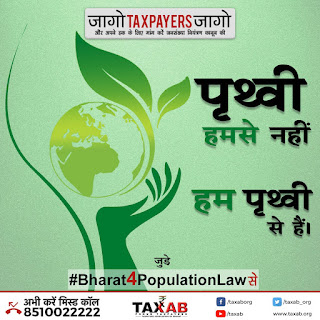The vices of uncontrolled population growth are many and stress on natural resources is one of them. The natural resource that experiences the most stress is, however, land. Population growth and its impact on land use is a concern for governments and environmentalists alike.
The problem
The problem that arises when dealing with population growth and its impact on land is unique. There are not many researchers concentrating on this issue let alone dedicated to finding a solution. The research work that does exists concentrates on case studies rather than the general problem. The case studies on population growth and its impact on land to provide an intriguing narrative for specific areas. They might also provide solutions for the concerned specific areas. The problem, however, is a global phenomenon.
The reasons behind the problem
The land is one resource that is limited in nature and will always be limited. Arable land on that is even more limited and only keeps on depleting. It is on these arable lands that farms and forests exist. It is farms and forests that sustain the population. That means it is these arable lands that majorly sustain the population. The population growth and its impact on land thus become a major issue. The ever-growing population needs more sustenance. The provision of this sustenance comes from arable lands increasing pressure upon them.
Problems due urbanisation
The pressure is not just on arable lands. With increasing urbanisation and industrialisation, a major shift in population towards cities is noticed. This leads to uneven growth of population. In cities, population growth and its impact on land manifest itself in form of lack of living space. This leads to the formation of slums and unplanned growth of cities. The unplanned growth of cities is not just an inconvenience. It leads to problems like the spread of diseases that cannot be contained structures being more prone to natural disasters. In unplanned cities; fires, earthquakes and such natural disasters cause more severe damage than in planned cities.
The ever-increasing population demands more living area. This demand for the living area leads to deforestation. Deforestation leads to loss of biodiversity and degradation of land. The degraded land is the direct result of the growing population. The degradation of land reduces arable land hence increases the pressure on the remaining land.
Population control is a major issue if one wants to reduce the pressure on land. The existing population is already too much for the lands of the planet to sustain. If the population is not controlled then there will be a severe shortage food and other essential items that come from land.
Probable solutions
To control the population the most effective tool one has is education. Education and awareness programmes about family planning are very necessary. Education should be aimed at sensitizing people towards the cons of increasing population. The increasing pressure on land can be dealt with only by controlling the ever-growing population.
Population growth and its impact on land is a serious issue that needs more concentrated study and a generalised approach.








